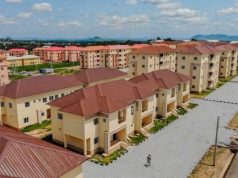By TPL Umar Shuaibu
Roadside greening refers to the practice of incorporating plants, trees, and other vegetation along roadways to enhance the environment and improve the overall quality of life. This practice offers numerous benefits, including improved air and water quality, temperature regulation, and aesthetic appeal. It also plays a role in carbon sequestration, helping to mitigate climate change.
There are different road hierarchies in the Capital City, which were accompanied with their technical terms. The major features are the highway system which are the Expressway network, consisting of Freeways and Parkway facilities. Within the Sectors of the City, a road system, consisting of Arterial, Collector and Local Streets provide internal access as well as connections to the Expressways. Thus, the highest hierarchy in the City Road system are the Expressways, followed by the Arterials, Collectors and Local Accesses in descending order.
The major roadside furniture are the streetlights, green components characterized by avenue trees and ornamental shrubs. Others are drainages water and communication lines, walkways and cycle paths. There are typical examples of major Roads that exhibit such greens along sections of their roadsides and median in the City.
A substantial budget of the Abuja City land use, 33 percent, is earmarked for green components aimed at ensuring a balanced ecosystem. Hence, the reference to Abuja as a Garden City from conception. Unfortunately that provision is now unceremoniously being depleted. However it is possible to substantially recreate some of the lost components, through elaborate roadside greening project. The infrastructure in terms of Expressways, Arterial, Collectors and Local Roads of the various categories were already implemented.
A roadside verge greening zone (RVGZ) is the strip of land alongside a road, typically between the curb and the sidewalk or property line, which is designated and managed for planting trees and other vegetation. These zones contribute to urban greening by providing aesthetic appeal, ecological benefits, and potential for biodiversity.
The Umaru Musa Yar’adua, Murtala Muhammed, Nnamdi Azikiwe, Goodluck Ebele Jonathan Expressways and the Muhammadu Buhari, Shehu Shagari, Olusegun Obasanjo Arterial and other Roads could provide a very good and quick takeaways for implementation. Already the Ibrahim Babangida Arterial is a very beautiful boulevard, but can also be enhanced.
Specifically major Expressways are referred as Northern and Southern Parkways in order to underscore the significance of the attention to be devoted to its greening at implementation. The Northern Parkway is the Sani Abacha Way and was in place long ago, while the Southern Parkway is still under construction.
The strips earmarked for the roadside and median greens were adequately provided at the Northern Parkway, but the befitting trees, shrubs and ornamentations to match the Road hierarchy and importance in the Capital City were very short of their expectations. The Southern Parkway should equally be factored for very adequate consideration for provision of befitting green components to the section that is now completed. These are very necessary in order to bring up the beauty of Abuja and justify the investments in the provision of these infrastructures.
Also, four important parallel streets serving the Central Area District are the B06, B08, B10 and B12. Of these the B06 and B12 are partly developed as parkways from the city gate to the three arms zone and are in use for long. The B08 and B10 are referred to as ceremonial corridors and are to be developed as boulevards, however they have not been developed all these while but the space to accommodate them is still preserved till date, courtesy of the continuous vigilance by the Development Control Department.
Globally, there is growing recognition of the potential of road verges to contribute to urban greening and ecosystem service provision, beyond their original functions of utility provision and public access. Mandai Road in Singapore is known for its scenic beauty characterized by lush tree-lined canopy with heritage trees and gorgeous view. It is designated as a Heritage Road and is a fine example of the natural heritage and history of Singapore. Similarly the ornamentation adorning the Addis Ababa Airport Road is very remarkable, a good model and worthy of emulation.
Roadside vegetation is an often-overlooked contributor to urban greening, even though streets are ubiquitous and central to people’s experience of cities, as well as being a place where public and private spaces intersect (Vich and Weber et al). Urban road verges, variously termed roadside or street verges, roadside gardens, road easements or nature strips, have the potential to make a significant contribution to urban greening. For instance, in Melbourne, Australia, verges represent approximately one-third of the city’s public greenspace (Marshall et al).
Urban verge greening generates direct and indirect environmental co-benefits including promoting biodiversity and providing wildlife habitats. Verge greening also supports active transport and access to local parks, through shaded and more attractive streets. It also contributes to broader neighbourhood greens, which has been linked to positive health outcomes.
To be continued



